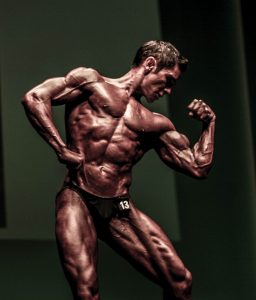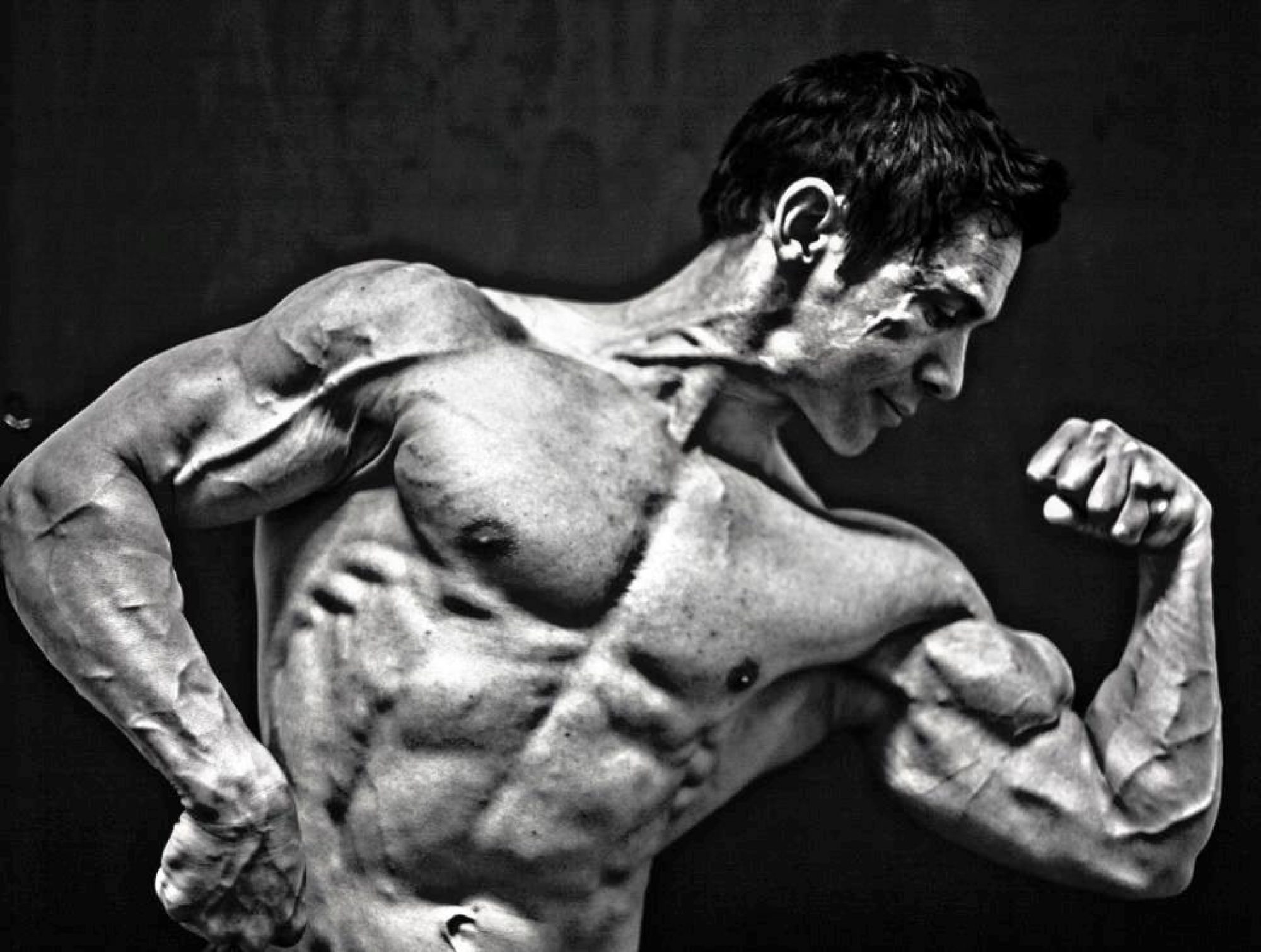
Posture has a significant part in how we gain muscle and even how our physiques look (You only have to look in the mirror with your chest puffed up compared to being slouched over to realise the latter claim). It is important that you consider posture when you train so that you develop muscle in the right places, remain injury free and look your best. Below are some features and reasons for poor posture with some strategies to improve it for a better physique.
Forward head posture is a common problem in the gym. You would have noticed people at the gym who walk around with their heads slightly slouched forward, or who when completing exercises lurch their head forward on each repetition.
It usually occurs because people:
• Use momentum to complete a lot of their exercises.
• Crunch their torso forward during exercises (to stabilise their body) which can further encourage the problem.
• Have poor posture (they slouch: their spine is in kyphosis) to start with.
This over time usually leads to neck and shoulder problems. Realising also that if your head is forward and down (instead of straight and directly over your shoulders) gravity is working on it all the time. Imagine in 10 years what your posture would look like if you did nothing to correct it (you would definitely have a more hunched over look).
Internally rotated shoulders are another problem that can exacerbate kyphosis of the spine and poor posture. Often weight trainers love to train the showy muscles like the chest and front deltoids while neglecting the muscles of the upper back like the traps and rhomboids. Over time the chest muscles become overdeveloped in relation to the back causing the shoulders to slouch forward. This will definitely make your physique look narrower, less aesthetic and more prone to injury the longer you are involved in weight training.
Another reason for poor posture is the core; the abdominals, hip flexors and lower back not being strong enough (or not being used properly) to stabilise you during exercises. Most people who have kyphotic posture tend to perform exercises crunched over or leaning forward which usually means their upper and lower back muscles are not flexed properly, leaving them open to injury.
So how do we correct these common problems?
• Make sure you are aware of your own posture. Some people are more naturally kyphotic than others so assess your posture (or get someone else to) so you can select exercises that will improve your posture.
• Learn what good posture is and looks like. My students in the weight room at school are taught to stand with their chest puffed up, belly button in, feet shoulder width apart and knees slightly bent with their head above their shoulders looking straight ahead (usually this is enough to get their posture right). I also show them what poor posture looks and feels like so they are in a better position to correct themselves.
• Make sure you train with controlled movements and that you maintain a neutral head position (looking straight ahead, head over shoulders and no movement).
• Use exercises that put muscle on your upper back like:
Deadlifts, Barbell, dumbell or machine rows (rows with elbows out will generally hit them better- but experiment to see what feels the best), Low pulley upright rows-make sure you stand about a metre from pulley station (this position seems to be better on the shoulder joint and hits the upper back muscles hard), shrugs with a focus on pulling up and slightly back (not to be confused with rotating up and back).
• Put less emphasis on chest training and focus on the upper back muscles. A good rule is for every chest exercise you complete, do at least two exercises for the back. For example my Chest & Back workout at the moment looks like this:
Exercises
1. Deadlift
2. Incline DB fly press (cross between DB fly and DB bench press)
3. Bent over row or machine row (On machine rows I focus keeping my ribcage high and pulling my scapulae back and down in one fluid movement).
4. Chin up
5. DB Pullover
I naturally have a tendency to slouch a little (a combination of a slightly kyphotic spine or natural tendency to slouch, working on a computer a lot and not giving my upper back muscles the priority they needed) so training like this has helped a lot in changing my posture for the better. I have noticed that because my shoulders are not as internally rotated (because of a stronger back) it is easier for me to feel my chest exercises better as my shoulders are taken out of the movement more; as a result I am making more improvements in my chest than when I was doing three times the work!
• You can perform some easy exercises at home like locking your hands behind your back, then, with straight arms raise your hands as high as they can go slowly. Repeat 10-20 reps a couple of times a day. You can also hold your bent arms up, out to the side (parallel to the ground) and perform scapulae squeezes for the same amount of reps as above.
• Make sure you stretch your chest, shoulder and neck muscles after workouts so that the muscles do not become tight. You could also use a broom stick- rest it on top of you traps with arms wrapped around the broom to get a good shoulder/chest stretch.
• Train your core muscles by performing heavy compound movements with good form. I feel these are more beneficial than the focus on stability ball training which seems to be the rage at the moment.
• Perform a movement like the Plank where you are in a press up position on your elbows with a straight back. Suck belly button in and hold for 2 minutes +. Progress to the rollout.
• Focus on the lower aspect of the rectus abdominus by performing reverse crunch movements.
• When you are out of the gym make sure you walk with good posture, imagine the top of your head being attached to a hook, chest up and relaxed.
• When seated in front of a computer make sure the screen is high enough so that you do not slouch and take regular breaks to perform some of the exercises mentioned above.
Although this only scratches the surface in terms of ways you can improve your posture, I hope it gives you a good starting point to consider what you can do to develop muscle in the right places, remain injury free and look your best.
